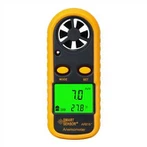What is the difference between near-field optical microscope and far-field microscope
What is Near Field Optical Microscopy?
Since the 1980s, with the advancement of science and technology to small-scale and low-dimensional spaces and the development of scanning probe microscopy technology, a new interdisciplinary subject - near-field optics - has emerged in the field of optics. Near-field optics has revolutionized the traditional optical resolution limit. The emergence of a new type of near-field optical microscope (NSOM—Near-field Scanning Optical Microscope, or SNOM) has expanded people's field of vision from half the wavelength of incident light to a few tenths of the wavelength, that is, the nanometer scale. In near-field optical microscopy, the lenses in conventional optical instruments are replaced by tiny optical probes with tip apertures much smaller than the wavelength of light.
As early as 1928, Synge proposed that after irradiating incident light through a small hole with an aperture of 10nm to a sample with a distance of 10nm, scanning with a step size of 10nm and collecting the optical signal of the micro area, it is possible to obtain super high resolution. In this intuitive description, Synge has clearly predicted the main features of modern near-field optical microscopy.
In 1970, Ash and Nicholls applied the concept of near field to realize two-dimensional imaging with a resolution of K/60 in the microwave band (K=3cm). In 1983, the BM Zurich Research Center successfully fabricated nanoscale light holes on the tip of a metal-coated quartz crystal. Ultra-high optical resolution images at K/20 are obtained using tunneling current as feedback for the distance between the probe and the sample. The impetus to bring near-field optics to wider attention came from AT&T Bell Laboratories. In 1991, Betzig et al. used optical fiber to make a tapered optical hole with high light flux, and deposited a metal film on the side, coupled with a unique shear force probe-sample spacing adjustment method, which not only increased the transmitted photon flux. At the same time, it provides a stable and reliable control method, which has triggered a high-resolution optical observation of near-field optical microscopy in different fields such as biology, chemistry, magneto-optical domains and high-density information storage devices, and quantum devices. series of studies. The so-called near-field optics is relative to far-field optics. Traditional optical theories, such as geometric optics and physical optics, usually only study the distribution of light fields far away from light sources or objects, and are generally referred to as far-field optics. In principle, there is a far-field diffraction limit in far-field optics, which limits the minimum resolution size and minimum mark size when using the principle of far-field optics for microscopy and other optical applications. Near-field optics, on the other hand, studies the distribution of light fields within a wavelength range from a light source or object. In the field of near-field optics research, the far-field diffraction limit is broken, and the resolution limit is no longer subject to any restrictions in principle, and can be infinitely small, so that the optical resolution of microscopic imaging and other optical applications can be improved based on the principle of near-field optics. Rate.
The optical resolution based on near-field optical technology can reach the nanometer level, breaking through the resolution diffraction limit of traditional optics, which will provide powerful operations, measurement methods and instrument systems for many fields of scientific research, especially the development of nanotechnology . At present, near-field scanning optical microscopes and near-field spectrometers based on evanescent field detection have been applied in the fields of physics, biology, chemistry, and material science, and the scope of application is constantly expanding; while other applications based on near-field optics, Such as nano-lithography and ultra-high-density near-field optical storage, nano-optical components, capture and manipulation of nano-scale particles, etc., have also attracted the attention of many scientists.
Apart from the fact that they are both called microscopes, there are not many similarities.
First of all, the biggest difference is that the resolution is different. The far-field microscope, that is, the traditional optical microscope, is limited by the diffraction limit. It is difficult to image clearly in regions smaller than the wavelength of light; while the near-field microscope can achieve clear imaging.
Secondly, the principle is different. The far-field microscope uses the reflection and refraction of light, etc., and can use the combination of lenses; while in the near-field, a probe is needed, and the coupling and conversion of the evanescent field and the transmission field are used to achieve light alignment. signal acquisition.
Also, the complexity of the instrument, the cost, etc., the two are not the same.






